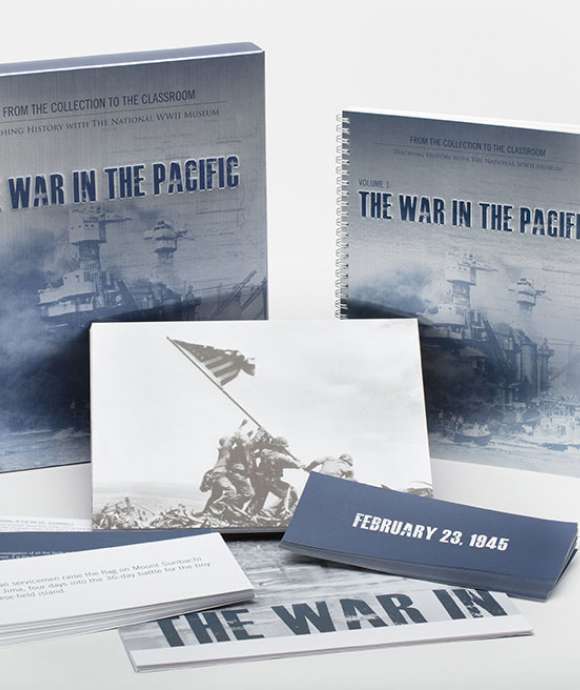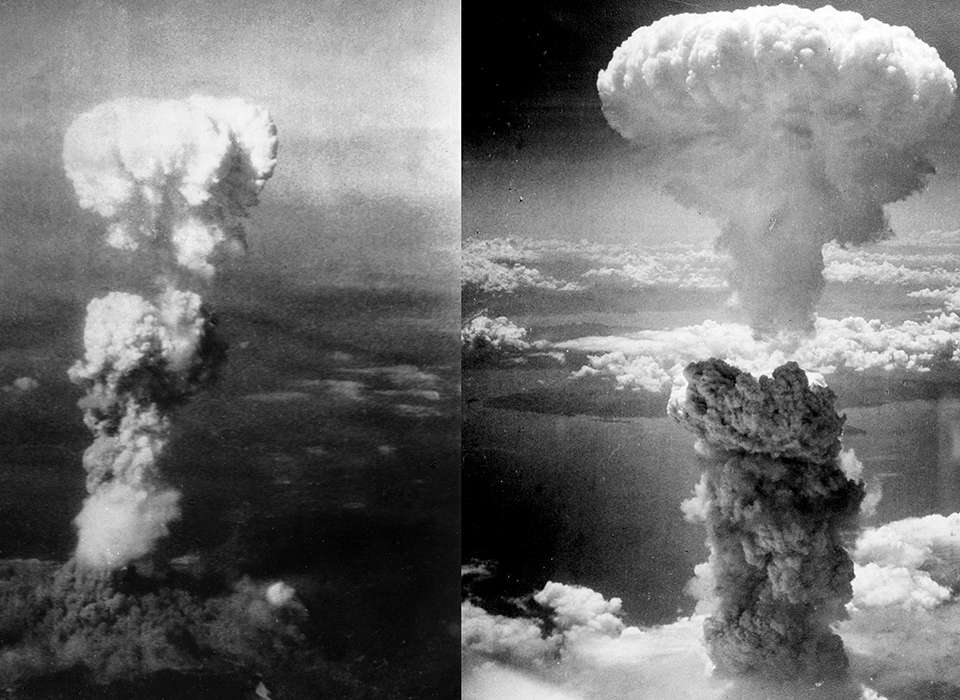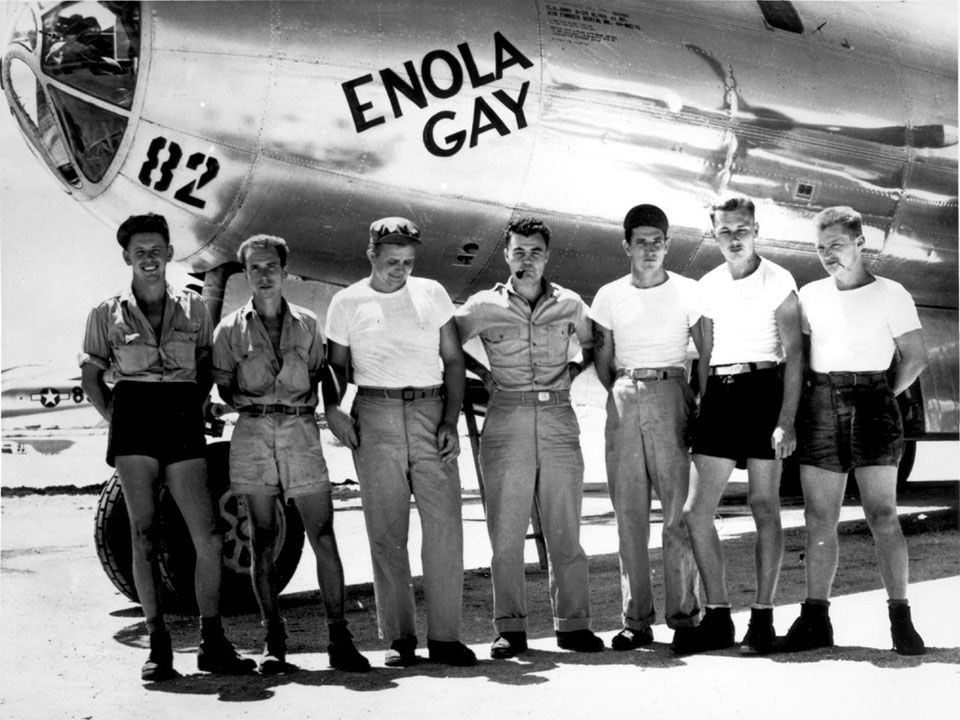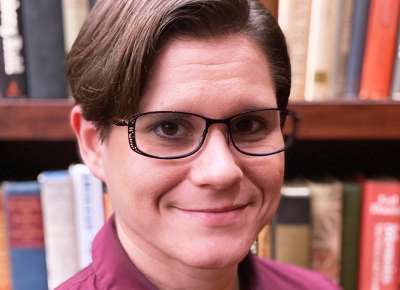Top Image: Mushroom clouds rising over Hiroshima (left) and Nagasaki (right). Courtesy of the United States Department of Energy.
Teaching the history of atomic bombs and the role these weapons had in ending the conflict plaguing the Pacific theater of World War II presents a set of unique challenges that forces educators to confront a combination of topics, including military history, nuclear science, and questions of morality. Required by national teaching standards, American educators face the task of finding ways to teach and discuss an event of such significance it altered the trajectory of global history. Added to this challenge, educators must find a way to carve out the necessary time to fit this event within its proper context; a context that only happens to include the largest and most significant global conflict to occur in the history of the modern world.
Frequently, lessons about the atomic bombs and the end of World War II center on President Harry Truman’s decision to use these new weapons. Centering the decision within questions of morality can encourage students to imagine alternative outcomes; fictionalized narratives in which the United States did not drop the bombs. Use of counterfactuals can appear to be a compelling teaching strategy, especially when approaching such a difficult, polarizing topic. Use of counterfactual, or “what if?” history, however, takes precious time away from teaching students what actually happened: President Truman issued the order and the United States dropped two atomic bombs on two separate Japanese cities. This order led to the deaths of hundreds of thousands of Japanese civilians, and it brought the war in the Pacific to an abrupt end.
The history of the atomic bombs expands far beyond Truman’s decision, however, and educators seeking new ways to cover these events have a deep well of content from which they can pull. Curriculum resources offered by The National WWII Museum gives educators access to lesson plans, essays, and oral histories aimed to help them to teach a challenging topic; a task made all the more difficult by tight limits on available class time. Through these materials, educators can find overview essays, comprising of only a few pages, that will help introduce their students to big topics such as the Manhattan Project, the top-secret operation that brought over 100,000 people together to work on the creation of the atomic bombs. Lesson plans ask students to consider the different experiences and perspectives of individual workers who were a part of the Manhattan Project but often did not know what they were helping to build. Through oral history clips, students can also hear directly from participants, such as Lawrence Johnston, a physicist who helped develop nuclear weaponry and witnessed the Trinity Test, the first successful detonation of an atomic bomb.
Additional resources offered by the Museum help educators teach their students about the state of the war in the Pacific in 1945. This includes maps that detail the extensive firebombing campaigns carried out for months by the US across Japan, and essays that capture the refusal of Japan’s leaders to concede defeat in spite of those attacks. Curriculum materials cover the diplomatic history of the Potsdam Declaration, as well as the numerous factors that fed into Truman’s ultimate decision to use the new atomic bombs against two cities on the Japanese home island. Through these materials, Truman’s decision, which is a critical component to the history of the atomic bombs, comes to fit within a larger narrative. The enhanced context can help students to analyze that critical moment when the two bombs, codenamed “Little Boy” and “Fat Man,” detonated over Hiroshima and Nagasaki in August 1945. Essays also help students understand the aftermath of the atomic bomb attacks, including the devastation incurred at the moment of detonation, and also the years of anguish that resulted from radiation poisoning.
Educators face a daunting task of teaching an event in history that remains deeply enmeshed within a litany of significant events, each that contributes a necessary element to the context that surrounds those two momentous days in August 1945. Pressures of time and teaching requirements puts educators in a difficult position of deciding what to prioritize and what to cut. Through concise essays and ready-to-use lesson plans, The National WWII Museum seeks to help educators successfully cover this complicated subject, all while fulfilling teaching requirements, in a manner that looks beyond sole consideration of Truman’s decision. The history of atomic weaponry is both horrific and captivating. It is a key part of the history of World War II, while also comprising only a portion of the war’s overall timeline. The reality of what occurred affected the lives of hundreds of thousands of people, well before Truman issued that fateful order. The events that followed were of such significance, that counterfactual narratives threaten to diminish the true weight of how two bombs changed the world. By incorporating a larger perspective and an expanded historical context through the Museum’s curriculum offerings, educators can present a more thorough view of the events that led up to, and the critical moments that followed, the decisive moments the United States dropped the bombs.

Like this article? Read more in our online classroom.
From the Collection to the Classroom: Teaching History with The National WWII Museum.
This article is part of an ongoing series commemorating the 75th anniversary of the end of World War II made possible by Bank of America.
Kristen D. Burton, PhD
Kristen D. Burton, PhD, is a former Teacher Programs and Curriculum Specialist at The National WWII Museum.
Cite this article:
MLA Citation:
APA Citation:
Chicago Style Citation:











